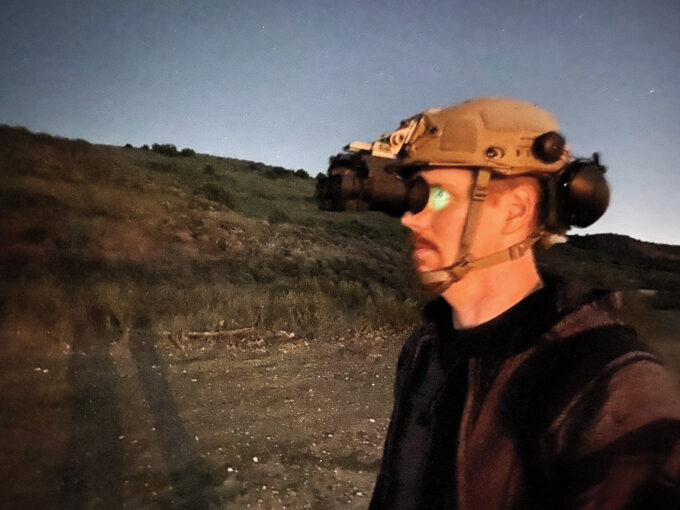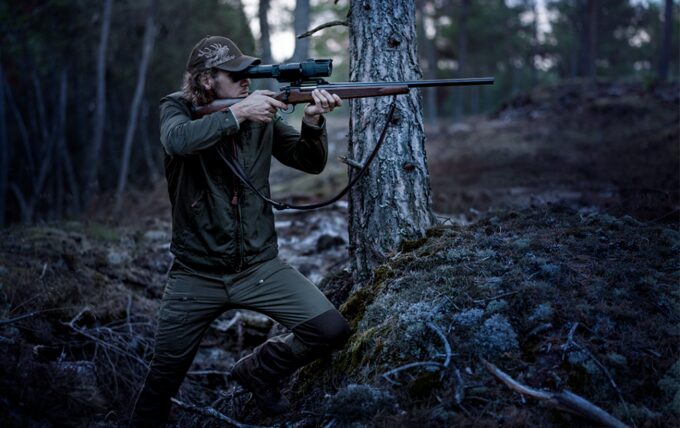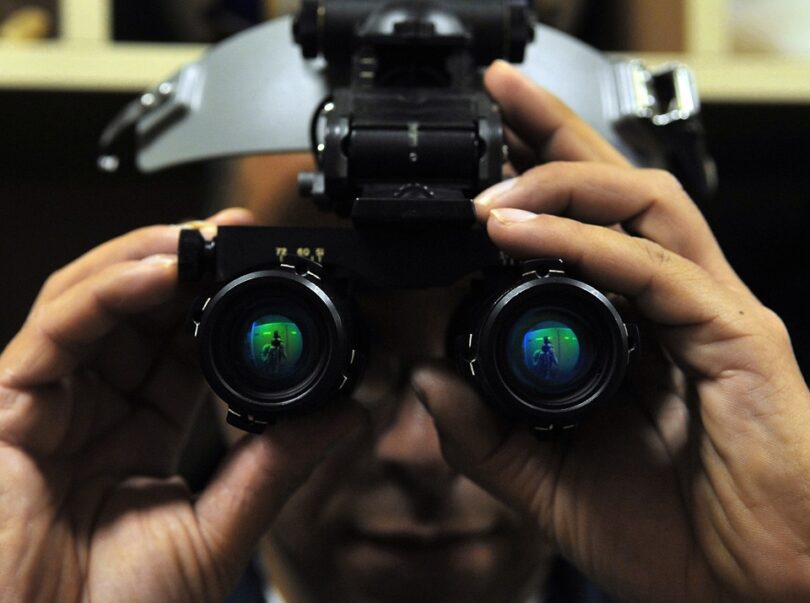Night vision gear allows people to see in dark environments while out for surveillance, hunting, exploring, and recon. Mostly night vision goggles are associated with military uses or those fancy equipment used by task forces.
However, if not all, some of these capable pieces of equipment are available for the public for domestic use, such as for hunting and exploration requirements. For instance, imagine a scenario where you went on a solo camping trip and got lost in the woods. Your flashlight battery is dead, and you’re out of glow sticks. Having Night vision goggles as a backup will save you from such kind of trouble to a great extent.
Night vision equipment is usually integrated with either of the following two technologies. Image Enhancement (IE) or thermal Imaging (IR). While IE uses available light to enhance a clearer image, IR uses infrared light radiated from warm bodies or objects to develop an image to provide a clear picture of what’s in front of you in dark environments.
You must pack your night vision gear properly before confidently carrying it for future assistance during adverse situations. Maybe you’re looking to hunt a boar during hunting season. You do not want your equipment to malfunction right before a crucial moment. So always ensure that you pack your gear properly to avoid unnecessary damage.
Standard Measures Before Packing Night Vision Gear
Traveling with night vision gear isn’t difficult as some people would think. It’s simple to do, and if done right, it would almost feel the same way as you would with your travel laptop. In this post, we will talk about a few in-depth details for safely and subtly packing your night vision gear while you’re on the move.
The standard measures for storing your night vision at home or your inventory are also applicable when traveling with it. Let’s look at a couple of mandatory preparative measures that you need to take before you start packing.
- First off, you must always pull the battery out of your night vision before packing.
- Ensure your night vision device is off and your sight caps are closed.
- Also, it is always a good idea to first pack your night vision goggles inside the little green pouch that came with them in the package.
Some manufacturers do not include these pouches with the standard package anymore. However, companies such as OpticsForce provide aftermarket gear and accessories that provide the same type of pouches with various styling elements and cosmetic updates. These items are available both online as well as in physical stores. Several enthusiasts prefer these updated versions for their extra utilities and features to standard inclusions.
So, now you can go ahead with the packing. Once you pack your night vision sights in its pouch, there are two different ways you can travel with it.
Traveling with a Helmet – Hiking Or Hunting

Source: offgridweb.com
Generally, when you carry night visions for hiking or hunting, you will require a helmet to use it. The helmet provides a solid frame or mounts to fix and position your night vision for maximum utility as well as effectiveness. To pack night vision helmets, you can use bags such as the Prometheus Designs S.H.A.D.O. backpack that comes with an external tail-end or beaver pack tail.
The S.H.A.D.O is what you describe as an advanced packing bag for sophisticated gear but also works great for packing sweaters, rain gear, or just any random thing you want. However, people mainly spend the extra premium for its looks, durability and are mainly used as a travel bag for equipment such as your night vision and helmet.
As for the packing method, you first store your night vision device inside the helmet with this bag. The helmet is hard and supposed to protect your head. So it will act as an extra solid protective layer for your gear as well. Then you can go ahead and snap your helmet with the night vision by clipping the beaver tail onto the top of the bag nice and easy.
Also, it’s likely for you to carry an extra jacket or sweater while hiking or hunting. You can use this apparel to hide your night vision helmet. Keeping a low profile while carrying sophisticated gear is always a good idea. However, packing jackets in such bags may be a hassle.
Traveling without a Helmet
Another option is bringing night vision without a helmet. Sometimes, you might bring a Crye Nightcap to mount your night vision instead of your full-on helmet. You will still require your pouch to pack it the same way as you would with a helmet.
The only difference is that you can put these into a normal backpack like an EDC bag. Crye Nightcaps are pretty nifty and useful for certain things, especially when you want to pack light and keep a low profile with your travel arrangements.
Conclusion

Source: wht.ru
It is obvious that your packaging and travel arrangements will vary according to the type of trip you’re planning that might require gear such as night vision or probably a rifle if you’re hunting. Maybe you’re just going to a renowned international hiking destination such as the Lechweg Trail or the West Coast Trail. Regardless, always try to keep it simple and low profile.
Now, it’s recommended that you carry sensitive gear like night visions in your carry-on while traveling far. TSA personnel can be careless when handling bags, and fragile devices are prone to damage if left inside check-in baggage. It’s better to carry these with you safely, and it doesn’t take up too much space.
Also, if you’re traveling outside the US, you might face problems carrying your night vision. The main reason is that there are ITAR restrictions. These restrictions prohibit bringing Gen-3 or sometimes even Gen-2 models depending on their specifications. The goal here is to keep American tech secrets safe and within the country.







